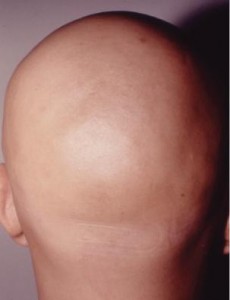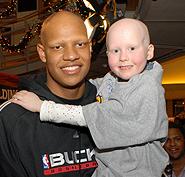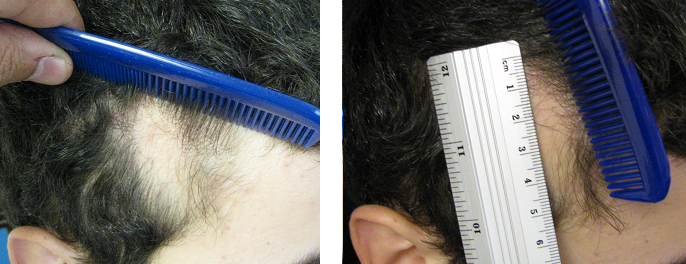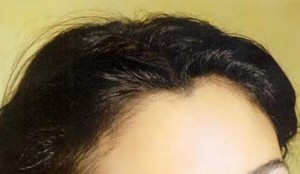Archive for October, 2009
Friday, October 30th, 2009

The field of hair growth and hair restoration has introduced a new player to its lineup: TRH (Thyrotropin-Releasing Hormone). It is likely TRH may turn out to be a heavy hitter in the fast-growing hair transplant industry.
Just recently, a new finding in hair elongation and the hair growth cycle was published in the Journal of the Federation of American Societies for Experimental Biology (The FASEB Journal). The research was conducted in Germany by Dr. Gaspar at the top-ranked University of L’beck, Department of Dermatology and Department of Internal Medicine.
It’s been shown that Thyrotropin-Releasing Hormone (TRH) is one of the crucial elements involved in the hair follicle growth cycle. Thyrotropin-Releasing Hormone is very closely situated to the hypothalamic-pituitary-thyroid axis. This axis stabilizes thyroid hormone synthesis.
Scientists have decided to study whether human hair follicle functions are also modulated by thyrotropin-releasing hormone, because it’s been found in human tissue. According to their findings, the researchers say that the epithelium of human scalp hair follicles expresses not only TRH receptors (TRH-R), but also TRH itself at the protein and gene level.
They found stimulation of organ-cultured hair growth with thyrotropin-releasing hormone stimulates hair follicle elongation, prolongs the hair growth cycle phase (anagen), and antagonizes its termination by TGF-beta2. It also increases proliferation and inhibits the apoptosis of hair matrix keratinocytes.
So, we can conclude from the study that thyrotropin-releasing hormone operates as a legitimate potent hair-growth stimulator. It’s proven to be an ideal discovery tool for identifying functions of thyrotropin-releasing hormone are hair follicles.
Tags: hair growth, hair growth stimulator, hair restoration, Thyrotropin-Releasing Hormone, TRH
Posted in hair loss medication, men hair restoration | No Comments »
Thursday, October 22nd, 2009
 Q: Q:
I am a 26-year-old woman.Not too long ago, I felt as if I owned the world. Then I got alopecia totalis, and now I’d rather hide, so I understand what it feels like to be a freak. But, remember, we have nothing to be ashamed about. This condition is more widespread than we think and people are more understanding than we give them credit for. People like us can live normal, happy lives, although maybe we may stand out in a crowd. Since I acquired alopecia totalis, lots of my people have told me they know someone with my disease. There are more people than we know who have alopecia totalis, like NBA player Charlie Villanueva. Although we don’t look exactly like other people, if we learn to overcome our own self-doubts we can be phenomenally successful people.
I’m a female. And it is my deepest desire to show the world, and especially other women suffering form alopecia totalis, that I can live with self-respect and high self-regard. I want to make it one of my goals to inspire young girls with alopecia totalis and help them to achieve their dreams.
I’m still in my twenties and I know I haven’t experienced the more serious consequences of alopecia totalis. I’m determined to maintain a positive outlook and I believe I will even later on in life. There’s a lot more to a human being than their hair style. In fact, maybe having alopecia totalis will help us focus more on our character and integrity than superficial appearances. If I had the choice of being bald and fit, or with a full head of hair and obese, I choose the former. I want to be a good steward of my physical body.
I love all of you. There is more to you than being bald. Much more. Don’t allow yourselves to feel like you’re so different from the world. Let me remind you that your closest buddies and those in your family who really love you, they see you for your true self. You don’t have to resort to wearing a wig or some other disguise to be accepted.
A:
What a wonderful attitude! Alopecia Universalis (AU) treatment can be complex and sometimes not even possible. If you visited one of our California Hair Restoration Offices and met some of my patients, you’d be dumbfounded by how crippled and saddened they feel at the loss of their hair.
A message I always give to my patients is that it is beneficial to look good physically. I say if it’s possible for a person to alter their appearance in a way that’s socially acceptable (e.g., getting a swastika tatoo on one’s face wouldn’t be), then do it. But if it’s not something that can be changed, know that you were made that way for a reason, and our differences are what make us unique and human.
Tags: alopecia universalis, Alopeica Areata, AU, bald is beautiful
Posted in California hair transplant, women hair loss | No Comments »
Saturday, October 17th, 2009
 Temporal triangular alopecia also known as TTA is a congenital hair loss condition in which the patient had a limited balding area on his temples. The condition is assumed to be congenital and is generally obvious since birth. The balding spot may contain normal numbers of hairs, but they are all vellus and generally not visible. Temporal triangular alopecia also known as TTA is a congenital hair loss condition in which the patient had a limited balding area on his temples. The condition is assumed to be congenital and is generally obvious since birth. The balding spot may contain normal numbers of hairs, but they are all vellus and generally not visible.
Congenital temporal triangular alopecia is considered a nonscarring alopecia and if biopsied should not be mistaken for Cicatricial alopecia. TTA respond well to hair transplantation and there are some studies that patient were treated with hair transplant surgery successfully with adequate coverage.
The condition could be treated by a hair restoration surgery at any age. We at the California offices of US Hair Restoration offer treatments for congenital temporal trangular alopecia.
Tags: congenital triangular alopecia, hair loss, hair loss treatment, hair transplant surgery, patchy hair loss, temporal triangular alopecia, TTA
Posted in California hair transplant, hair transplant | No Comments »
Wednesday, October 7th, 2009
 In a recent email sent to our office from a recent patient, he writes in regards to his scalp evaluation and regarding Propecia (Finasteride). He asks, “Could finasteride worsen the hairline due to the rise of testosterone?” and, “if there’s any safe and minor treatments to slow the progress of maturation or reverse it that you would recommend at this stage?” In a recent email sent to our office from a recent patient, he writes in regards to his scalp evaluation and regarding Propecia (Finasteride). He asks, “Could finasteride worsen the hairline due to the rise of testosterone?” and, “if there’s any safe and minor treatments to slow the progress of maturation or reverse it that you would recommend at this stage?”
Early stages of male patterned hair loss may not always be obvious enough to be differentiated from normal levels of miniaturized hair during scalp microscopic evaluation. Propecia (finasteride) is still the most recommended hair loss medication to prevent additional balding. Some patients have even been prescribed Propecia without proper diagnosis or documentation of their hair loss condition making it difficult to tell if they have gotten better since they started or worsened.
Propecia (finasteride) is designed to block DHT (Dihydrotestosterone) which is the main cause of male patterned hair loss. With this in mind, finasteride cannot deteriorate your hair loss or cause changes in the hairline. Maturation of the hairline is normal in all men and should not be confused with balding. We also do not have any further recommendation on medications that can stop the maturation of the hairline.
Tags: beverly hills, Beverly Hills Hair Restoration, finasteride, hair line, hair loss, hair transplant surgery, hairline maturation, hairline recession, male patterned hairloss, men hair loss, miniaturization, testosterone, young patients with hair loss
Posted in Bakersfield hair transplant, California hair transplant, hair transplant, men hair restoration, Newport Beach hair transplant, Orange County hair transplant | No Comments »
Thursday, October 1st, 2009
 In a recent article published in Dermatologic Surgery Journal, Dr. Nausbaum et Al discusses naturally occurring female hairlines. His study was based on a large panel of normal women for the purpose of comparing and contrasting hairline variables to attain the perfect female hairline. Given that male hair restoration has almost always been the focus of hair restoration this new information can help benefit women who are candidates for hair transplant surgery. In a recent article published in Dermatologic Surgery Journal, Dr. Nausbaum et Al discusses naturally occurring female hairlines. His study was based on a large panel of normal women for the purpose of comparing and contrasting hairline variables to attain the perfect female hairline. Given that male hair restoration has almost always been the focus of hair restoration this new information can help benefit women who are candidates for hair transplant surgery.
The author came up with a guide or type of blueprint to help determine the best hairline for a woman. This guide was based on the average recorded parameters in women with healthy, non-balding hair. Among a panel of 360 women, the most dominant feature found in 81% of the women was in fact the presence of the widow’s peak. In addition, around 90% of these women also showed lateral mounds.
It’s great to know that there is now a bigger emphasis in hair restoration for women with more viable information and techniques to help solve their hair loss. Our hair transplant surgical offices already specialize in female hairline reconstruction in women suffering from female patterned hair loss or male patterned hair loss. This technique has also been applied on transgender (male to female) patients to help soften and alter their masculine features.
We at our California offices of US Hair Restoration perform transgender hair transplants regularly and I personally believe that hair restoration is one of the most key procedures in sex reassignments process for transsexuals.
Tags: female hair line, female hair transplant, female hairline, hair loss treatment, hair transplant surgery, Los Angeles hair transplant, men hair loss, natural female hairline, transgender, transgender hair transplant, transsexual, widow's peak, woman hair restoration, women hair loss
Posted in California hair transplant | No Comments »
|
|






